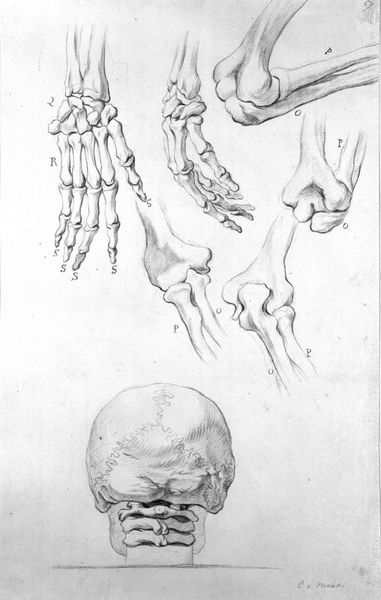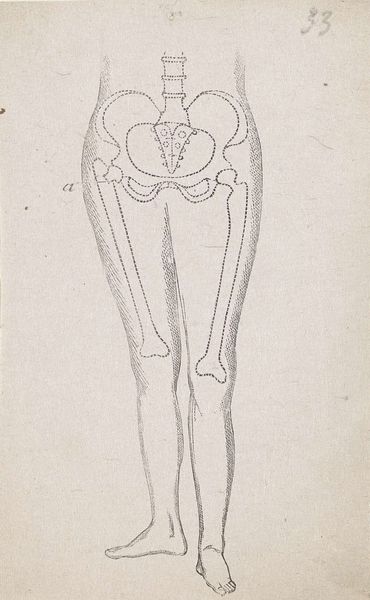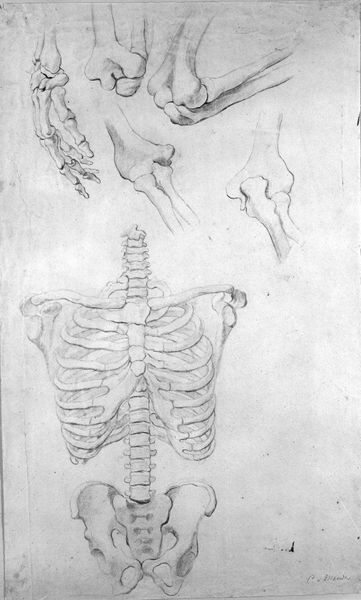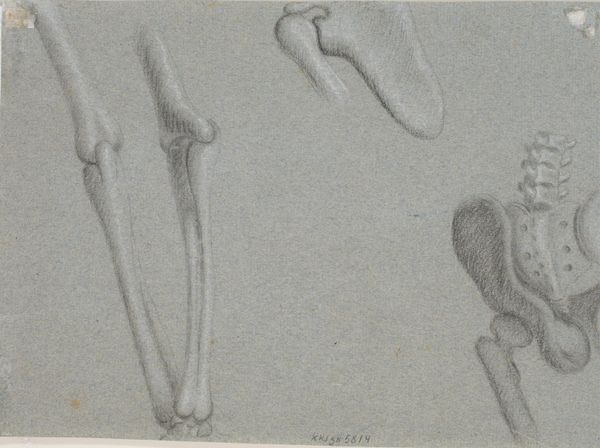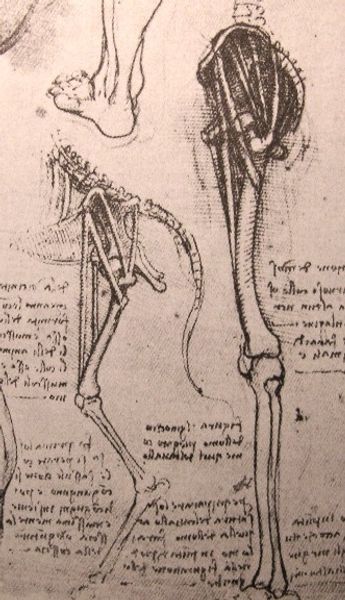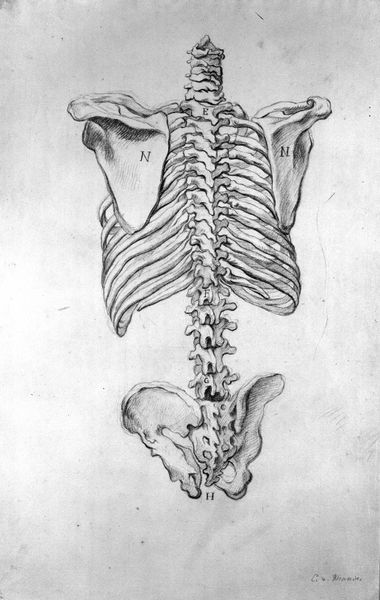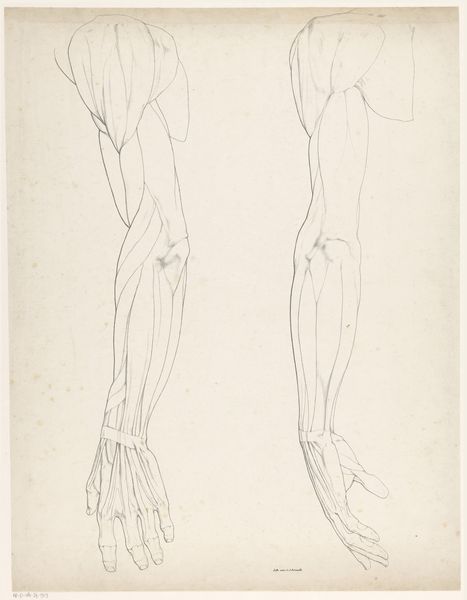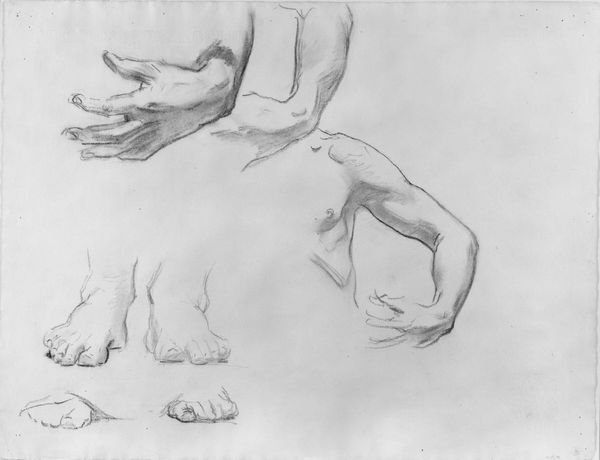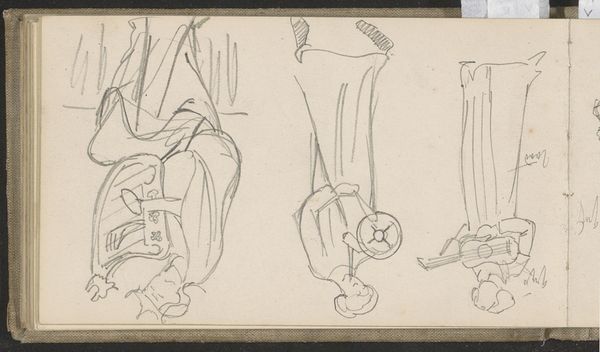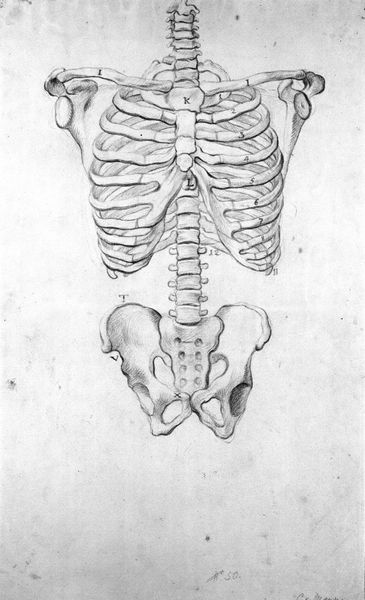
Knogler af et venstre ben, profil mod højre, fra hofte til tåspids; desuden detalje fra lårknogle lidt over knæet til hæl, og en halvdel af et bækken. 1660 - 1663
0:00
0:00
drawing, pencil
#
drawing
#
figuration
#
pencil
#
history-painting
#
academic-art
Dimensions: 453 mm (height) x 302 mm (width) (bladmaal)
Editor: Here we have Karel van Mander III’s drawing, from about 1660 to 1663, titled "Bones of a Left Leg…" It’s a very precise pencil study of human skeletal remains. The level of detail is almost unsettling. What kind of artistic or cultural environment produced such a work? Curator: This meticulous anatomical drawing speaks to the rise of academic art, heavily influenced by scientific inquiry and its social position at the time. In the 17th century, there was increasing interest in science to understand the mechanics of the human body as both science and art began intertwining. Where do you see that interplay manifested? Editor: I guess the careful rendering of the bones themselves. It is devoid of dramatic interpretation or romanticising of the subject. Is it fair to say it is objective or at least intended to be so? Curator: Exactly. And it’s tied to how academies of art functioned; these drawings served as learning tools. They provided models for artists to study the underlying structure of the human form, essential for history painting, the most prestigious genre at the time. Knowing human anatomy, an artist could more convincingly depict a battle scene or biblical story. Were those things separate in their mind? Editor: Interesting. I see how mastering anatomy, almost like an objective and detached pursuit, empowered the creation of grandiose history paintings that also influenced perception. Curator: Precisely! These bones represent a complex network of socio-political and cultural aspirations all intertwined with the artist's quest to produce powerful and convincing representations of humanity. Editor: I’ll definitely look at history paintings differently from now on. There's this underlying foundation in both science and power. Curator: That’s a powerful way to put it! It shows how something seemingly simple reflects larger systems of knowledge.
Comments
No comments
Be the first to comment and join the conversation on the ultimate creative platform.


